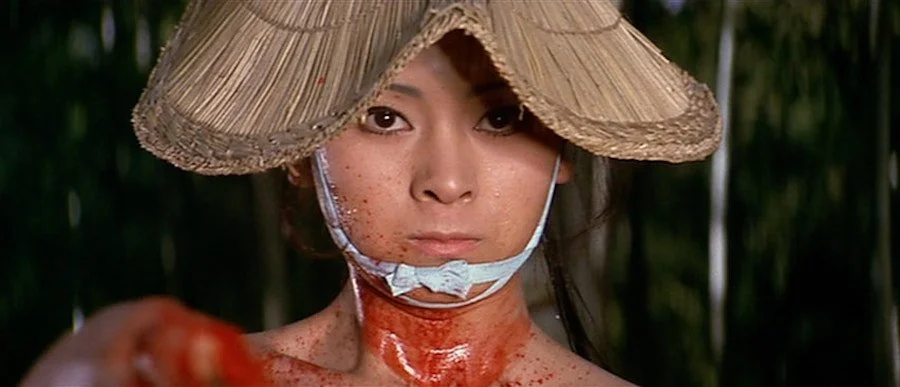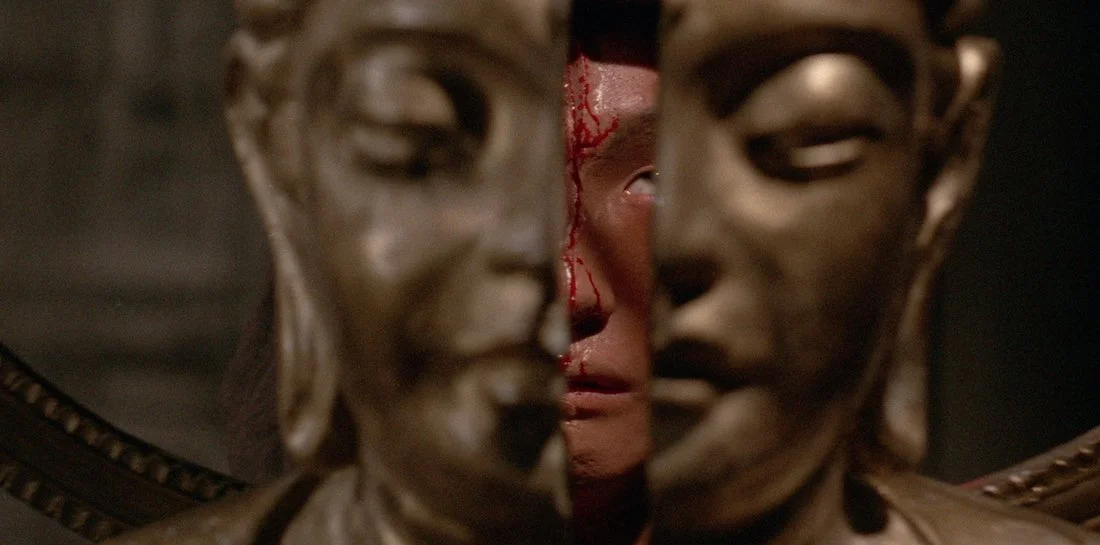Fourths Of July: LONE WOLF AND CUB: BABY CART IN PERIL (1972)
When it comes to the world of film franchises there are a few universal truths that everyone knows and discusses. The even numbered entries in the Star Trek series are the good ones. If you are a struggling horror franchise, repurpose discarded scripts as sequels and release them on DTV. There have only ever been three Indiana Jones films and it will stay that way until the end of time.
At the same time, there's one truth that doesn't get discussed as often: part 4's are weird. Be it a desire by an executive to mix things up, kick off a new trilogy or find a fire to help rake in more money, something happens that knocks things off the rails. At least, that's how it appears when you look back on the last 20-30 years. Travel back a little further to 1972 and you have not only a prime example of how a fourth entry can not only stay the established course but, in some ways, best the movies that proceeded it. A little film called LONE WOLF AND CUB: BABY CART IN PERIL.
For those with only a tertiary knowledge of the franchise, Lone Wolf And Cub started as a manga in 1970, created by Kazuo Koike and Goseki Kojima.
Within two years it proved so popular that it launched a slate of films. The tales followed a wandering ronin named Ogami Ittō (Tomisaburo Wakayama) who, with his 3-year-old son Diagoro (Akihiro Tomikawa), makes ends meet by completing assassinations. They also constantly clash with the Yagyu clan, headed by the evil Retsudo (Tatsuo Endo), who killed Ogami's wife and created an elaborate conspiracy to strip him of his title of Shogunagte Executioner. Ogami and Diagoro often dispatch their foes as a formidable unit, incorporating a vast arsenal hidden within the panels of their wooden baby cart.
More impressive than the quick transition from page to screen, was the fact that four out of the six films in the franchise were released in 1972. While that may normally lead you to believe the finished products were a bit slapdash, you'd be wrong. There's a polish and finesse to each film that stands strong to this day. Easily digestible chamber exploitation tales wrapped up in tidy packages. Another factor helping them stand out from other franchises is that they unfold in "episode of the week" fashion. Always ending with Ogami silently pushing the baby cart down a road, a la The Incredible Hulk TV series. At least that's how it unfolded through the first three chapters.
LONE WOLF AND CUB: BABY CART IN PERIL announces that it's something of a different beast from frame one. Director Buichi Saito (who took over from series regular Kenni Misumi) opens the film with a heavily tattooed breast. Bearing a Kintaro on her chest and Yamamba on her back, O-Yuki (Michi Azuma) quickly dispatches a few men who came to kill her after deserting her station at a nearby palace. She does this with all great skill, gushing blood, and impressive dismemberments one would associate with these movies. Saito then doubles down on placing a jaunty jazz-influenced score over the opening credits. It's jarring, yet also oddly pleasing, becoming more infectious as the film rolls on.
As these stories are wont to do, Ogami is tied up in affairs due to his assassination assignment, putting him on a direct path O-Yuki to make her pay for her supposed crimes. While doing a little gunshot work, Diagoro and Ogami are suddenly separated. The film follows the resolute 3-year-old as he traverses what appears to be countless miles through changing weather. It's here that some of that "fourth film weirdness" rears its head. Diagoro has a song explaining the search for his father, followed by random expository voice-over further explaining things, and is then capped by him running into a a character that has internal dialogue—a trait no other person exhibits in all of Saito’s film.
The reason the above is even remotely palatable is that it adds to the movie’s overall charm. While also introducing the movie's most important character: Gunbei Yagyu (Yoichi Hayashi), Retsudo's son. His initial interaction with Diagoro piques his interest as the child doesn't react to a sword being mere inches from his face. It baffles the disgraced samurai that someone so young could have a will hardened by battle more than his. When Ogami then enters the scene, it clicks for Gunbei, and BABY CART IN PERIL makes its case for being the most important film out of the six. In a pivotal flashback its revealed why Ogami was chosen over Gunbei for excecutioner, the shame it brought upon the Yagyu clan and the seed that was planted for Retsudo to ruin Lone Wolf's life.
That's the astonishing element that ties it all together: almost every character has a reason for the way they're acting or the information they're withholding. These character traits imbue everyone with a sense of tragedy and sympathy, even while their actions may be despicable or leave a pile of bodies in their wake. Though O-Yuki's story gets less time than the battle between Lone Wolf and the Yagyus, it still comes off more thoughtful than it initially appears. There are reasons given for her tattoos and fighting style, ties into a tragic story of deception, rape, and, ultimately, cathartic revenge.
Allowing Gunbei and O-Yuki to be more than one note characters adds an unexpected level to the film.
Given the abbreviated runtime, none of BABY CART IN PERIL’s added flourishes have much room to breathe, often over in a flash and smash cut into yet another battle scene. That’s because, outside of the serious moments, it still wants to get to all the bloody carnage, of which there is plenty.
It also doesn't skimp on side plots—dealing with a troupe of wondering actors, their pseudo king/leader, evil flutists with baskets on their heads, and mud-covered Buddhist ninjas.
No one comes into a Lone Wolf and Cub film expecting much more than carnage and excitement. BABY CART IN PERIL features those classic elements while expounding upon the light philosophical touches found in the third movie. By providing some much-deserved backstory to color in Ogami's downfall and Retsudo's madness, the series becomes more concise and stands out from the countless other chambers movies of the period.
The final shot of LONE WOLF AND CUB: BABY CART IN PERIL is the perfect encapsulation of what makes this outing different. Standing in stark contrast to the prior films, Ogami still pushes his cart off into the distance, only now severely bloodied, bruised, beaten, and limping towards an uncertain future. That's not just a hell of an ending coda but proof that sometimes the fourth part of a franchise shouldn't be overlooked—there's a good chance it may be one of the best or underappreciated entries that series has to offer.







